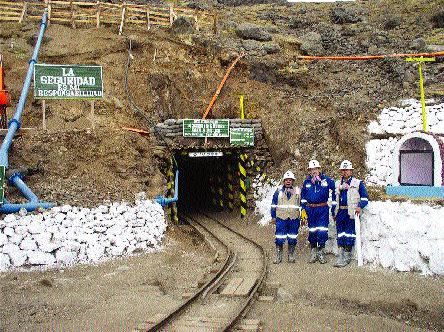Vancouver-based
Fortuna was expecting to raise at least $10 million in June by issuing 10 million units at $1 per unit. Each unit would consist of one share plus a full warrant to purchase an additional share at $1.25-1.50.
The scarcity of good silver plays on the market combined with the backing of industry favourite Simon Ridgway as financier and director of the company made the transaction seem like a sure thing.
But a dip in silver prices, a weaker market for junior mining stocks and problems with a major resource fund out of London conspired to scuttle the deal, says Warwick Smith, Fortuna’s manager of media relations.
The company got its mine anyway, but under slightly less favourable terms. Instead of paying US$3 million in cash at closing under the terms of the original deal, Fortuna borrowed that amount with interest from the mine vendors, Hochschild Group.
Under a revised agreement, Fortuna — which paid US$100,000 on signing — will pay US$2.95 million at the 6-month anniversary of closing and another US$4.5 million six months later, for a total of US$7.55 million.
Hochschild, a private Peruvian mining firm, will also receive shares and warrants equivalent to 10.8% of Fortuna’s fully diluted capital. So far, Fortuna has issued to Hochschild 574,744 shares and warrants to buy 862,117 shares at 34.5 for two years.
To honour the cash payment schedule, Fortuna is reviving its financing plan using the same pair of brokers that worked on the first deal, Bank of Montreal in New York and Vancouver-based Pacific International Securities.
Smith says an initial tranche would raise $6-8 million dollars by selling units at 75-80 each. The second tranche, planned for sometime in the fall, would raise as much as $6 million at up to $1.25 per unit. Fortuna shares currently trade in the 70-80 range.
“We have had a great deal of interest from other parties — both mutual funds and brokers — who would likely work through Pacific International,” he says.
To tide the company over, insiders have added $1.05 million to the company treasury through a private placement of shares and warrants priced at 70 per unit.
Fortuna’s new asset, the Caylloma silver mine, is a 400-year-old past-producer in southern Peru, located about a 5-hour drive from the city of Arequipa. The mine has a NI 43-101-compliant reserve of 7 million oz. silver and a resource of 14 million oz. silver, but has been on care and maintenance since December 2003.
It is essentially a turnkey operation with a 600-tonne-per-day mill and a 350-man camp. Because the infrastructure and permits are already in place, Fortuna believes production could resume within 12 months of the next significant financing at a rate of 2 million oz. silver per year from high-grade ore shoots.
In the immediate future, Fortuna will concentrate on defining additional reserves, particularly within the property’s Animas vein, which currently contains about half of the mine’s resources. Previous work focused solely on high-grade silver shoots within the vein, but Animas also carries significant lead and zinc values that have bulk-tonnage potential.
“There is as much value in the base metals as there is in the silver,” says Fortuna President Peter Thiersch, a geologist with 20 years experience in mineral exploration throughout North and South America. “Previously, about seventy per cent of the value was in the silver, but now it’s almost fifty-fifty.”
Production is modelled on a 600-tonne-per-day operation with an annual yield of 2 million oz. silver, 8,000 tonnes zinc and 5,000 tonnes lead per year over a 10-year mine life.
Under this scenario, the mine would generate net revenues of US$14 million and cash flow of US$6 million per year. Assuming a silver price of US$6.50 per oz., the average value of the rock would be US$70-80 per tonne, while mining costs would be US$40 per tonne.
Fortuna anticipates a total capital investment of US$7.5 million — including US$3.5 million in the first year — to explore and develop the mine, build more infrastructure, upgrade the plant to 1,000 tonnes per day, and add a zinc-recovery unit.
But Thiersch says the Caylloma acquisition is just the first step in Fortuna’s plan to become a significant silver-gold producer in Latin America.
“Through our connection with the Hochschild group and now presence in the district, we are uniquely positioned for other acquisitions,” he says. “There is an opportunity to consolidate some of the past-producers and old prospects into a larger land package.”
Caylloma, which has the only mill in the region, is part of a volcanic-hosted, low-sulphidation system with at least 30 silver-bearing veins. The veins are 1-4 km in strike length, with an average width of 1.5 metres and average grades of 311-467 grams silver per tonne (10-15 oz. silver per ton). Fortuna’s concession covers a total of 8,171 hectares that encompasses several past-producers and untested veins.
There are two types of mineralization: high-grade silver in narrow veins and silver-lead-zinc averaging 3-5% base metals in wider veins, such as Animas.
The company also is earning into the Tambor property, a lode gold deposit in central Guatemala containing 57,000 oz. of proven and probable gold reserves and another 216,000 oz. gold in inferred resources.
Fortuna believes it can outline several hundred thousand additional ounces of gold on the property, which contains a 14-km gold-in-soil anomaly that has yet to be tested.
To earn its 60% interest in Tambor from another Ridgway vehicle,
The Tambor property was discovered by Radius in 2000 and optioned to


Be the first to comment on "Soft market delays new silver play"